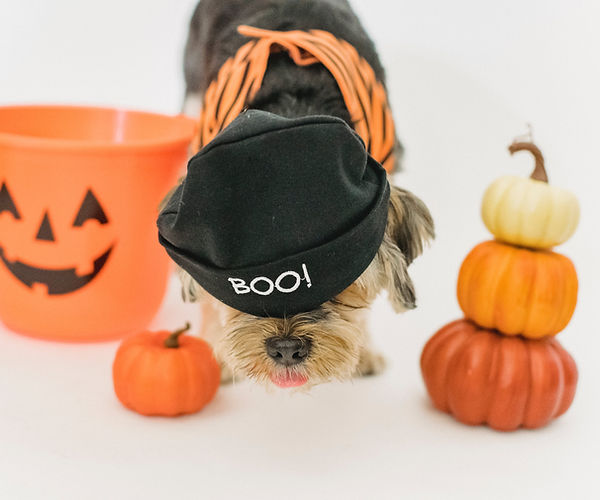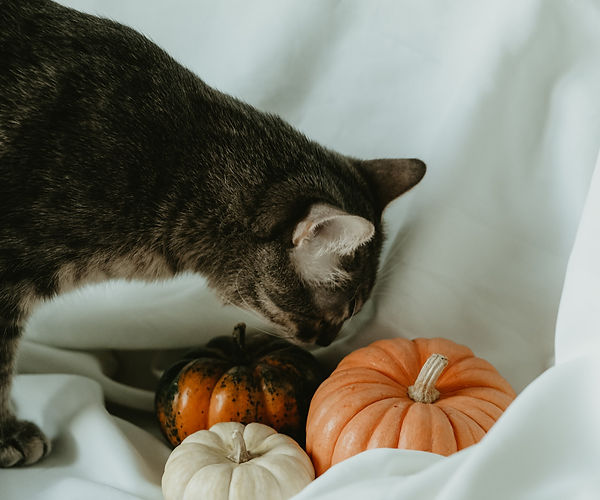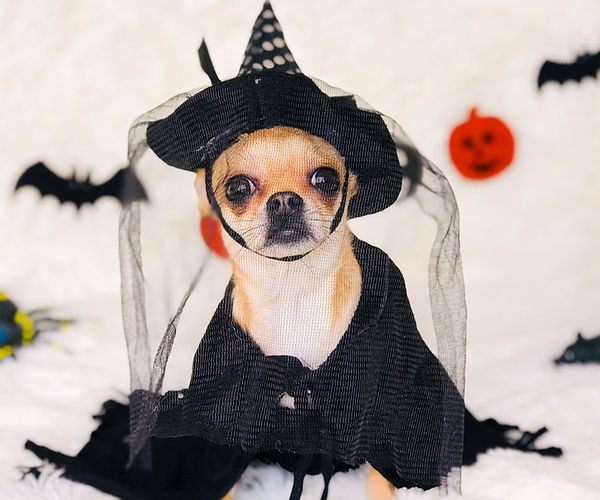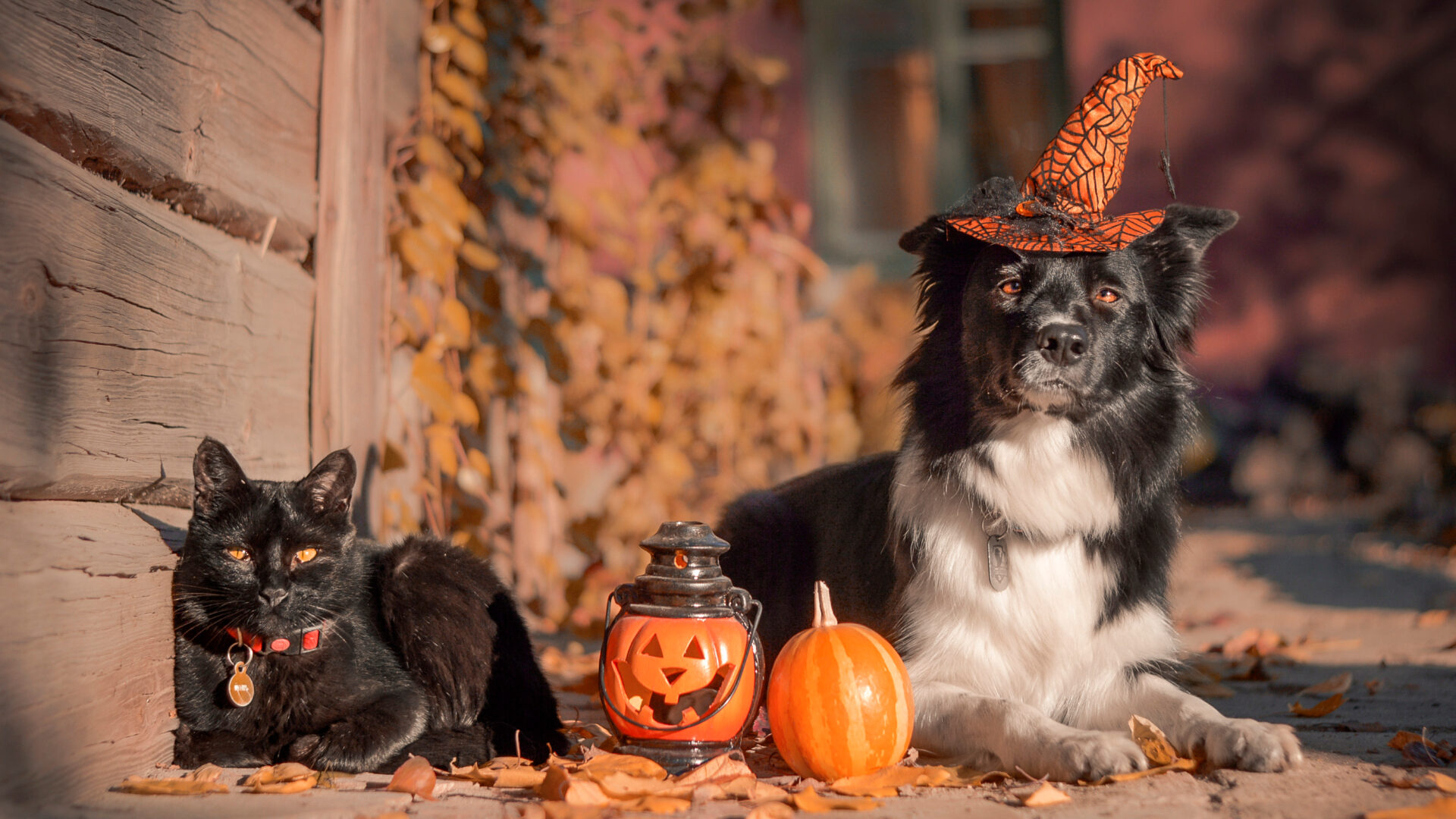
Halloween is creeping around the corner, and though the holiday is all fun and games for families, it can be paw-sitively terrifying for some pets. From toxic treats to constricting costumes, pets face many dangers of getting poisoned, hurt, or lost.
As a care provider, here’s what you can do to prepare your clinic for emergency pet care on the Night of Fright.
Halloween Pet Safety Tips for Veterinarians:
1. Candy for pets is all tricks, no treats.
As much as we want to share everything with our pets, candy can be extremely toxic to our furry and scaley friends, so, as a veterinarian, it’s important to educate your clients on this topic of Halloween pet safety. Chocolate, xylitol, nuts, and caffeine are common in Halloween treats but are dangerous to pets. [1]

Caring for chocolate ingestion
Every year, especially around this spooky season, one of the top ten calls to the ASPCA Animal Poison Control Center (APCC) is due to chocolate consumption. Children can often mistake that a treat for them is also a treat for their pet companion.
Signs of chocolate ingestion include:
- vomiting
- diarrhea
- abnormally fast heart rates (tachycardia)
The chocolate toxicity calculator can help determine how serious the risk is for each pet, using factors such as pet weight, type of chocolate, and amount of chocolate consumed. Make sure to have this link handy as Halloween draws near!
Caring for xylitol ingestion
Even a small amount of xylitol can cause blood sugar to drop dramatically (hypoglycemia), causing symptoms such as:
- vomiting
- weakness
- lack of coordination [2]
Inducing emesis can be productive to remove xylitol from the system, but not always. If a pet is experiencing tachycardia, emesis could induce an undesirable outcome. Guidance on how and when to induce emesis can be found here.
2. Halloween decorations and costumes can stir up mischief.
Double, double, toil and trouble! Both decorations and costumes can cause more stress and problems around Halloween than anticipated. Here’s what you should look out for:
Glow stick or fake blood ingestion
Glowstick fluid and fake blood can cause stomach pains in cats and dogs. This Halloween, if a pet ingests a large amount of glow stick contents, removing the liquid reduces the chance of further ingestion and stomach irritation.
Ingesting glowstick fluid may also affect a pet’s gut microbiome. Glowstick fluid contains dibutyl phthalate (DBP), which has been shown to significantly affect the gut microbiome in small mammals at concentrations as low as 0.1 mg/kg. [3] Studies have shown an association between gut microbiome imbalance and health problems such as:
- Liver dysfunction in rabbits
- Diarrhea in ferrets
- Chronic kidney disease (CKD) in cats [4]
- Heart disease in dogs [5]
Halloween pet costumes should be cute but still safe.

Yes, we love dressing our cats in fur-ightening Halloween costumes, but do our pets always love it as well? Maybe not, because many costumes can be uncomfortable and stressful to wear.
Sometimes, Halloween costumes are more of a trick than a treat for pets. Tight costumes can limit their movement and ability to breathe, and small embellishments like buttons and tassels pose a serious choking hazard.
But costumes can be both cute, safe, and even, dare I say, a treat for pets! Shopping for costumes by size can ensure that they are comfortable for pet tricking or treating (check out some here!). Some alternatives to full-body costumes can be bandanas, collar charms, and Halloween-themed toys.

Pumpkins are good in moderation but a fright in excess.
Pets deserve their own special treats, and homemade pumpkin treats are a great replacement for candy! Halloween pet treats are super easy to make for dogs, cats, and rabbits; birds can even eat leftover pumpkin seeds from your jack-o-lanterns! However, just like people with chocolate, too much of a good thing can turn unpleasant. Eating too much pumpkin can cause digestive issues for pets, so make sure to recommend serving sizes to pet parents when sharing Halloween treat recipes.
Jack-o-lanterns can also pose an issue once they become rotten. If a pet gets curious around a rotten pumpkin, they can unwittingly ingest bad bacteria and fungi. Cladosporium fungus grows on rotten fruits and can cause ulcerated nodules on the digits, ears, and noses of pets. Culturing and PCR panels can identify this infection; however, species of Cladosporium respond poorly to treatment and these techniques are limited in profiling the microbiome. To make treatment more complex, there are multiple types of rot that can appear on pumpkins, which makes it difficult to know which pathogens to target.
Luckily, DNA sequencing can characterize all bacterial and fungal pathogens, not just a select few. It can also determine each pathogen’s susceptibility to 43 antibiotics, which makes it a faster and more reliable diagnostic tool!

Jack-o-lanterns can become even more scary once they begin to rot. Can you spot the microbial growth on these?
3. Veterinary tips for treating inbound patients on Halloween.
Be diligent with history-taking.
Asking pet parents intentional questions about the circumstances before, during, and after the incident will help you better care for your patients. Stomach aches have been mentioned here several times, so is your patient hurting because of chocolate or too many pumpkin treats?
When in doubt, call the APCC hotline.
The ASPCA Animal Poison Control Center (APCC) hotline is available 365 days a year 24 hours a day. Phone number: (888) 426-4435 (subject to consultation fees).
4. What steps can veterinarians take before Halloween night?
As a veterinarian, preparing before Halloween night can save you and your pet parents from getting too spooked. Halloween can be a stressful day for any pet, so here are two pet safety tips to discuss with pet parents in advance.
Halloween Pet Safety That All Pet Owners Should Know:
1. Check that pets are microchipped in case they run away.
Unfamiliar sights, strange scents, and loud sounds can make pets anxious, causing them to become skittish or flee. Microchips and ID’ed collars can get a lost pet returned home quickly and safely.
2. If medication is being used to relieve anxiety, consider doing a trial run.
Calming pets with anti-anxiety medication or a sedative is another great option to avoid stress. Pet parents should know how to administer the drugs and what to expect. Testing out the medication prior to Hallow’s Eve can ensure that the pet responds well and experiences no adverse side effects.
The MiDOG Pack wishes you and your pets a happy and safe Howll-oween!

“This is my resting witch face.”
References
[1] ASPCA. Accessed 13 Oct 2023. https://www.aspca.org/pet-care/animal-poison-control/people-foods-avoid-feeding-your-pets.
[2] Murphy, A. & Dunayer, E. (2018). Xylitol toxicosis in dogs: An update. Veterinary Clinics of North America: Small Animal Practice, 48(6), 985. https://doi.org/10.1016/j.cvsm.2018.06.004.
[3] Xiong, Z. et.al. (2020). Exposure to dibutyl phthalate impairs lipid metabolism and causes inflammation via disturbing microbiota-related gut-liver axis. Acta Biochimica et Biophysica Sinica, 52(12), 1382. https://doi.org/10.1093/abbs/gmaa128.
[4] Summers, S. et.al. (2018). The fecal microbiome and serum concentrations of indoxyl sulfate and p-cresol sulfate in cats with chronic kidney disease. Journal of Veterinary Internal Medicine, 33(2), 662. https://doi.org/10.1111/jvim.15389.
[5] Li, Q. et.al. (2021). Gut dysbiosis and its associations with gut microbiota-derived metabolites in dogs with myxomatous mitral valve disease. American Society of Microbiology, 6(2). https://doi.org/10.1128/msystems.00111-21.
[6] Suchodolski, J. (2022). Analysis of the gut microbiome in dogs and cats. Veterinary Clinical Pathology, 50(Suppl 1), 6.
Categories: Cats, Dogs, Ferrets, Pet Health, Safety and Wellness, Pet Parents

